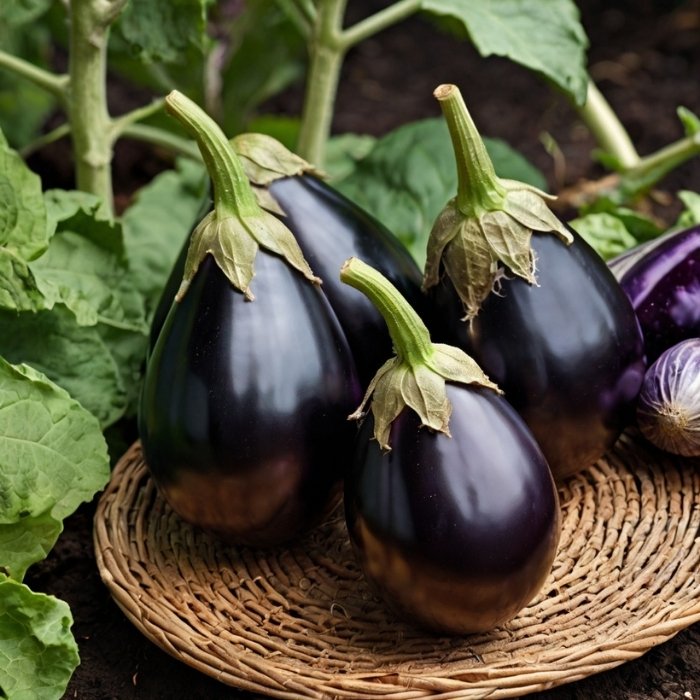The Ultimate Guide to Black Beauty Eggplant: Growing, Caring, and Cooking
Eggplants, also known as aubergines, have earned their place in gardens and kitchens worldwide. Among the numerous varieties, the Black Beauty eggplant stands out for its classic shape, rich flavor, and adaptability. Whether you’re an avid gardener or a culinary enthusiast, this guide will help you explore everything about Black Beauty eggplants—from planting and care to harvesting and cooking.
Introduction to Black Beauty Eggplant
The Black Beauty eggplant is a timeless favorite known for its glossy, deep purple skin and robust size. Originally cultivated in the Mediterranean region, this variety has become a staple in many gardens thanks to its versatility and productivity. With proper care, the plant produces large, tender fruits perfect for grilling, roasting, or using in traditional recipes like eggplant parmesan or baba ganoush.
Planting Black Beauty Eggplant
1. Choosing the Right Location
Eggplants thrive in warm, sunny spots with well-draining soil. Black Beauty eggplants need at least 6–8 hours of direct sunlight daily to produce healthy fruits. Ensure the soil is rich in organic matter and has a pH level between 5.8 and 6.5.
2. Starting Seeds Indoors
For optimal results, start Black Beauty eggplant seeds indoors about 8–10 weeks before the last frost. Use seed trays filled with a quality seed-starting mix, planting the seeds about 1/4 inch deep. Keep the soil moist and maintain a temperature of around 75–85°F to encourage germination, which typically takes 7–14 days.
3. Transplanting Seedlings
Once the seedlings have grown to about 6 inches tall and have at least two sets of true leaves, they’re ready for transplanting. Harden off the seedlings by gradually exposing them to outdoor conditions for a week before planting them in your garden. Space the plants 18–24 inches apart to ensure good airflow and reduce the risk of diseases.
Caring for Your Black Beauty Eggplants
1. Watering Requirements
Consistent moisture is essential for Black Beauty eggplants. Water deeply, aiming for 1–1.5 inches of water per week, and avoid wetting the foliage to prevent fungal diseases. Mulching around the plants helps retain soil moisture and suppress weeds.
2. Fertilizing for Growth
Black Beauty eggplants are heavy feeders and benefit from a balanced fertilizer high in phosphorus and potassium. Apply fertilizer every 3–4 weeks during the growing season. Organic options like compost or well-rotted manure are excellent for enriching the soil.
3. Supporting the Plants
As the eggplants grow, their heavy fruits can weigh down the stems. Use stakes or cages to support the plants and prevent them from toppling over.
4. Pest and Disease Management
Common pests that target Black Beauty eggplants include aphids, flea beetles, and spider mites. Regularly inspect your plants and use organic solutions like neem oil or insecticidal soap to combat infestations. To minimize the risk of diseases like verticillium wilt, practice crop rotation and avoid planting eggplants in areas where other nightshade family members (tomatoes, peppers, potatoes) were grown recently.
Harvesting Black Beauty Eggplants
Black Beauty eggplants are typically ready to harvest 70–80 days after transplanting. The best time to pick them is when the skin is shiny and firm, and the fruit feels slightly springy to the touch. Overripe eggplants develop a dull appearance and a spongy texture, which can make them bitter.
Use a sharp knife or pruning shears to cut the fruit from the plant, leaving a short stem attached. Handle the eggplants gently to avoid bruising.
Culinary Uses of Black Beauty Eggplants
1. Grilling and Roasting
Black Beauty eggplants are perfect for grilling or roasting, as their meaty texture absorbs flavors beautifully. Slice them into rounds, brush with olive oil, and season with your favorite spices for a smoky, caramelized treat.
2. Classic Eggplant Parmesan
Layer slices of fried or baked eggplant with marinara sauce, mozzarella, and Parmesan cheese for a classic Italian dish that’s both comforting and satisfying.
3. Baba Ganoush
This smoky Middle Eastern dip is made by roasting or grilling eggplants until soft, then blending the flesh with tahini, garlic, lemon juice, and olive oil. Serve it with pita bread or fresh vegetables.
4. Stir-Fries and Curries
Add cubed eggplant to stir-fries or simmer it in coconut milk-based curries for a hearty, flavorful dish.
Tips for Storing and Preserving Black Beauty Eggplants
- Refrigeration: Store fresh eggplants in the refrigerator’s crisper drawer, ideally in a breathable bag. Use them within 4–7 days for the best flavor and texture.
- Freezing: To freeze eggplants, slice and blanch them in boiling water for 2–3 minutes, then cool in an ice bath. Store the slices in airtight freezer bags for up to 6 months.
- Preserving: Pickle slices of Black Beauty eggplant in vinegar and spices for a tangy addition to sandwiches or salads.
Why Grow Black Beauty Eggplants?
- Versatility in the Kitchen: Their mild, slightly sweet flavor works well in a variety of cuisines.
- High Yield: With proper care, a single plant can produce numerous fruits throughout the growing season.
- Nutritional Benefits: Black Beauty eggplants are low in calories and rich in fiber, antioxidants, and essential vitamins like vitamin C and potassium.
Conclusion
The Black Beauty eggplant is a versatile, rewarding plant to grow in your garden. With the right care and attention, it can provide a bountiful harvest of delicious, nutrient-rich fruits perfect for a variety of dishes. Whether you’re planting it for the first time or adding it to your garden staples, this guide has everything you need to cultivate and enjoy this classic eggplant variety.
So grab your gardening tools, sow those seeds, and look forward to a season of gardening success and culinary creativity with Black Beauty eggplants!

